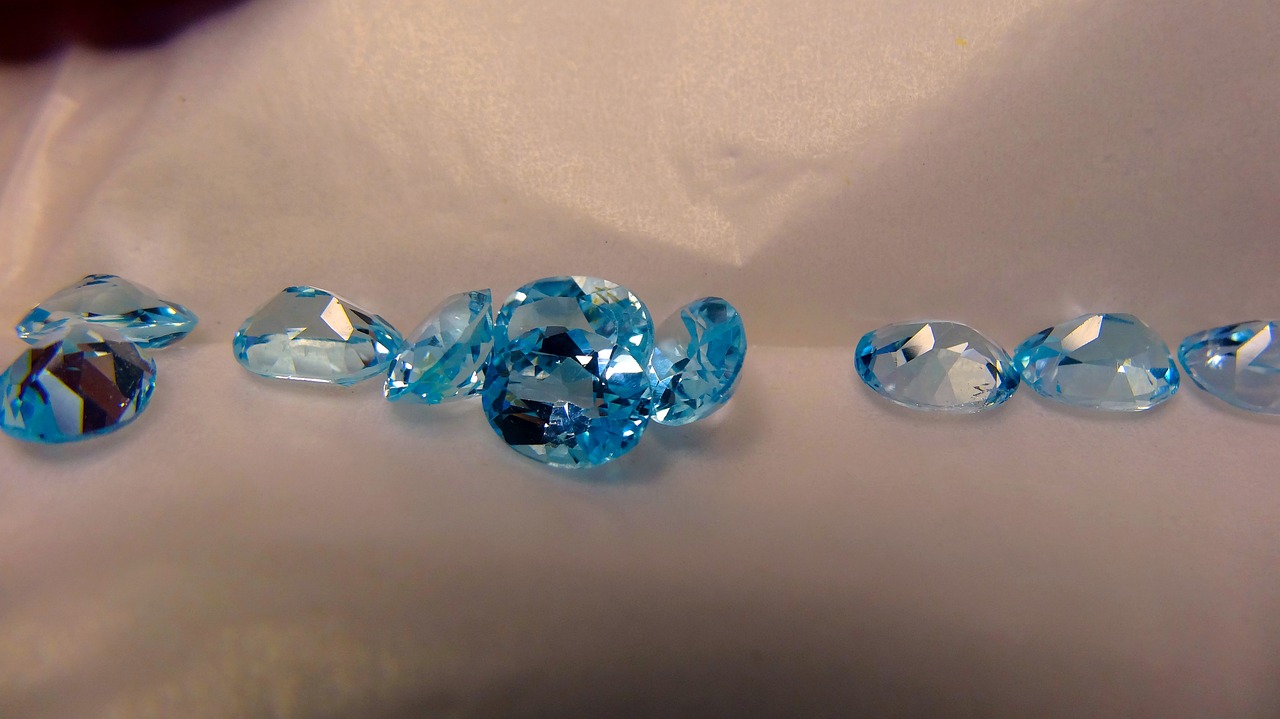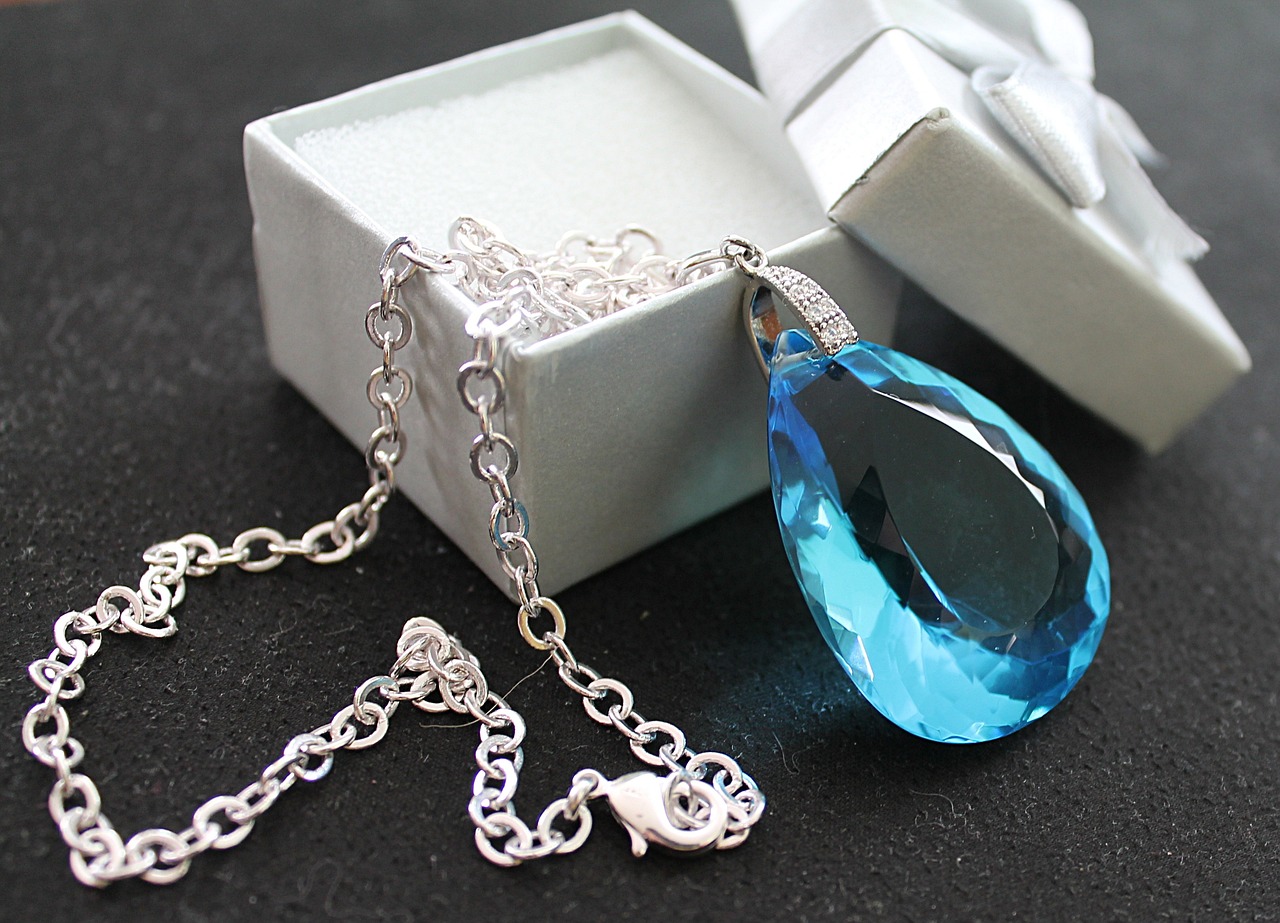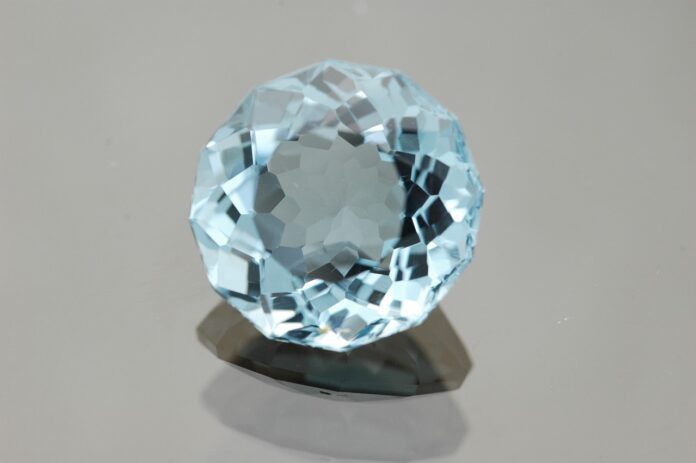Topaz is a semi-precious gemstone belonging to the aluminum silicate group. It is characterized by high density and hardness, a variety of colors, sizes, and vivid luster. The color of the stones is influenced by the exposure to sunlight and the elements it contains.
During processing, topaz is given various types of cuts: oval, emerald, round, square, marquise, as well as fancy shapes. The facets demonstrate the clarity and brilliance of the stone. Therefore, if there are uneven inclusions, it is given a cabochon shape, reminiscent of pebbles or lollipops.
Topaz – origin of the name
Topazes are found in many countries. The majority comes from Brazil. In addition, extensive deposits of topaz allow it to be mined on an industrial scale on the island of Sri Lanka, in the Urals, Transbaikalia, Australia, and Madagascar.
There are two versions of the origin of the name:
- From the name of the island where this mineral was discovered – Topazios. Currently, this is the uninhabited Zabargad Island in the central part of the Red Sea. However, there is a suggestion that the mineral found was not topaz but chrysolite.
- From the word “tapas,” which in the literary language of Ancient India, Sanskrit, means “heat,” “warmth.”
Earlier, topaz was also called “heavyweight.” This is an obsolete name. This is what the Ural miners called it because of its high specific gravity.
Color and shape of the stone
The main role in the evaluation of topazes is played by the color of the mineral. Colorless minerals are more common in nature. To give them the desired color or enhance the natural one, they are subjected to irradiation. This method is called enhancement.
Topaz colors can be very diverse: green, orange-red, yellow, brown, silver, brown, pink, golden, blue, and azure. At the same time, they have many shades, such as “wine,” “tea,” “champagne,” “Saxon chrysolite.”
Particularly valuable are crystals with inclusions and polychromatic ones (with different coloring). After cutting, they acquire beautiful shades as a result of color mixing. Such minerals include:
- Rutilated – colorless minerals with rutile inclusions.
- “Mystic” – the surface of topaz “plays” with shades of blue, green, and violet. The shades are obtained artificially.
- “Azotic” – has a property called pleochroism. It reflects many colors on its surface, creating patterns in the form of ornaments and kaleidoscopes. It is made by applying a layer of metal film.
- “Imperial” – belongs to rare, expensive types, has red and golden shades. Naturally colored specimens do not fade over time. According to one version, the stones were named because they used to be given to royal persons in Brazil. According to another version, gemstone traders named them to distinguish between topazes and citrines, which were mined in the same area.
But the most popular ones are blue topazes. The natural shades of such a mineral are pale, so it undergoes enhancement. Based on the intensity of the color, blue topazes are divided into the following types:
- Sky Blue – has pale blue tones.
- Swiss Blue – characterized by bright blue shades. A gray hue may be present.
- London Blue – the most valuable of blue topazes. Predominantly blue, sometimes with gray or smoky shades.
Varieties of topazes are sometimes classified as rauhtopaz, but this is incorrect. Rauhtopaz is not topaz at all; it belongs to smoky quartz.
Interesting facts about topazes:
Topazes appeared about three millennia ago. In ancient times, they were used as blades and for rituals. They became known in Europe in the 18th century. In Russia, blue topazes from Murzinskaya Sloboda were famous, with which jewelry was adorned.
Brazilian minerals mined in the “topaz belt” near the city of Ouro Preto are considered the most famous. The local museum houses a large number of specimens, and the staircase of the monastery in this city is covered with topazes.
Various unique specimens of topazes are found in museums around the world.
The museum in the Ukrainian city of Volodarsk-Volynsky exhibits a large number of rare mineral specimens. Among them are remarkably beautiful topazes:
- “Academic Fersman” – a transparent polychromatic topaz of blue and tea shades weighing 2 kg 107 g. The pattern of the stone resembles sails due to the white fluorite in its composition.
- “Fairy Tale” – a transparent mineral weighing 2.2 kg. Fluorite inclusions create a pattern resembling dandelion inflorescences.
- “Rostov Veliky” – thanks to fluorite and albite crystals in the stone, you can see the picture of the city with churches and houses.
- “Golden Polissya” weighing 1.85 kg has a golden-pink hue with dark inclusions, creating a forest landscape.
In American museums, you can admire the following specimens:
- “American Golden Topaz.” It has a light brown color, weighs about 4.5 kg, with a cushion cut. Before cutting, it weighed 11.8 kg.
- “Golden Topaz Sphere.” Cut into a sphere, it weighs 12555 carats.
- Topaz “Lindsay.” An uncut crystal weighing 32 kg. It has the shape of an elongated prism.
- Topaz “Freeman” – a crystal weighing 50.5 kg in the form of a prism with transverse stripes.
- Topaz “Brazilian Princess” weighing 21005 carats. It has a square shape and is cut in the form of an emerald.
- The Royal Gem Program collection in Madrid showcases the largest cut stones: the “Eldorado” topaz at 31000 carats, the “Lua de Maraba” at 25250 carats, and the “Amarillo” at 9600 carats.
- Another topaz worth mentioning is the colorless Braganza Diamond, weighing 1640 carats. It was named after the royal house of Portugal. The gemstone is remarkable because it was once considered a diamond.
Who is suitable for topaz according to astrology and the Zodiac sign
Topaz is the stone of November, so it is most suitable for Scorpios. Astrologers recommend choosing violet and blue shades. The stone will attract luck and give strength to solve problems. For Scorpio women, topazes will help them be confident and insightful, and for men, to become wise.
But other zodiac signs should not ignore it either. Topaz will help Gemini and Sagittarius achieve their goals and attract luck. It will serve as a talisman for Aquarius and Libra in love affairs, give confidence to Cancer and Virgo, wisdom to Aries and Capricorn. It will help Leo in communication with relatives and colleagues, and protect Pisces from danger.
Healing and magical properties of topaz
Since ancient times, topazes have been endowed with healing and mystical properties, especially blue specimens. Their power was associated with the full moon.
In the Middle Ages, it was believed that golden topaz could cool boiling water. And the ancient Romans believed that topaz made them invisible in times of danger and used it to cure eye diseases and plague. Blue topaz was considered the patron saint of sailors, who believed it could calm a raging storm.
For Hindus, topaz is a sacred stone. They believe that the mineral prolongs life and quenches thirst.
African shamans communicate with the dead using topaz. And the Bushmen (a small group of hunting tribes in South Africa) use the stone to heal wounds.
It is believed that with the help of topaz, one can cope with emotions and relieve tension. It promotes digestion, accelerates tissue regeneration, strengthens the thyroid gland, and treats infertility.
It is used as a talisman against curses and black magic, as well as to detect deception. It helps gain confidence and promotes the manifestation of creative abilities.
